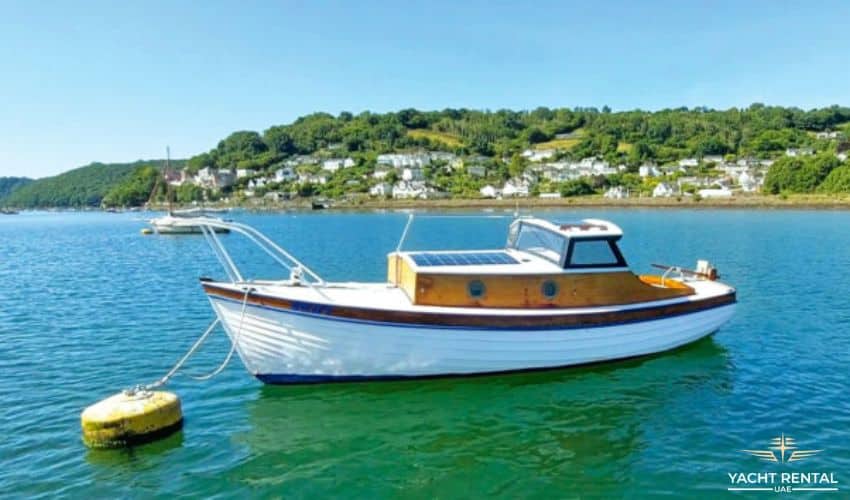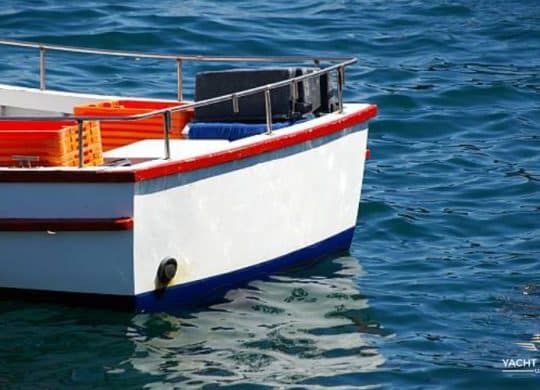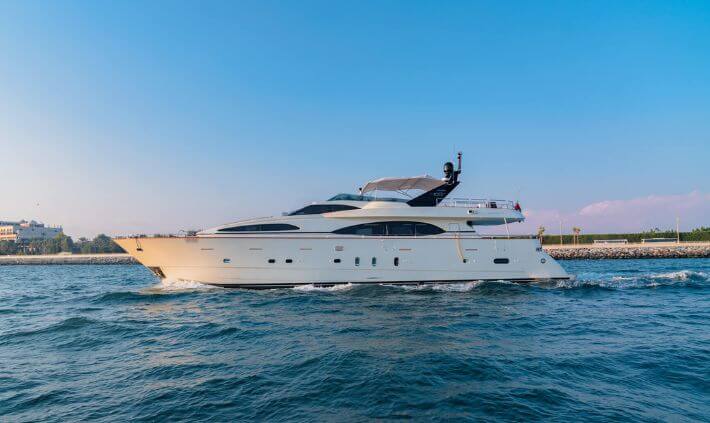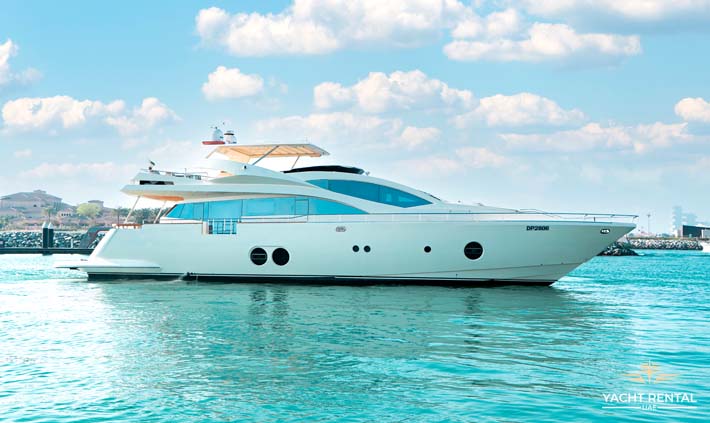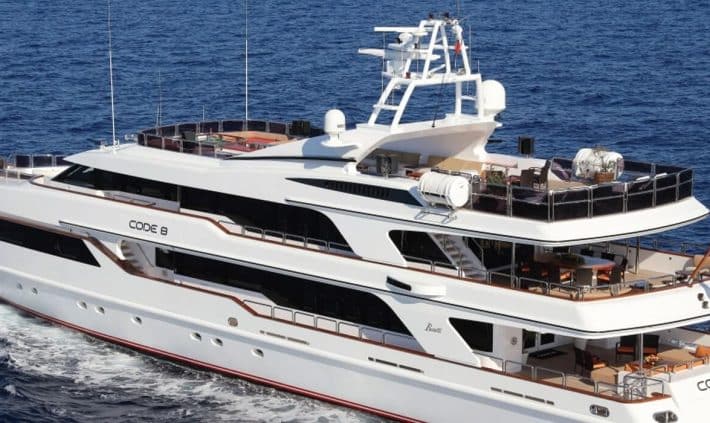Early Stern Designs of a Boat
Now that you have learned what is the stern of a boat, it is time to talk about its history. Boat sterns have evolved considerably throughout maritime history.
The earliest documented stern designs were simple and functional, primarily offering structural support and a mounting point for rudimentary steering mechanisms.
Ancient wooden vessels featured basic transom designs that prioritized stability over hydrodynamic efficiency.
European and American wooden sailing ships initially developed two principal stern forms: the square (or transom stern) and the elliptical (also called fantail or merchant stern).
These early designs reflected the technical limitations and maritime knowledge of their eras while addressing specific sailing needs.
Modern Innovations in Stern Design
According to HMS Unicorn, in 1817, British naval architect Sir Robert Seppings revolutionized stern design by introducing the rounded stern concept.
It addressed a significant weakness of square sterns, which were vulnerable targets for enemy cannons and couldn’t adequately support heavy stern chase guns.
The rounded stern was later superseded by the elliptical stern, with the United States building the first elliptical stern warship in 1820, the USS Brandywine.
As naval architecture advanced further, iron-hulled cruiser sterns emerged, offering superior performance and resilience in combat situations.
Today’s yacht sterns incorporate advanced hydrodynamic principles for optimal performance, fuel efficiency, and comfort, representing centuries of maritime engineering evolution.
Types of Boat Sterns
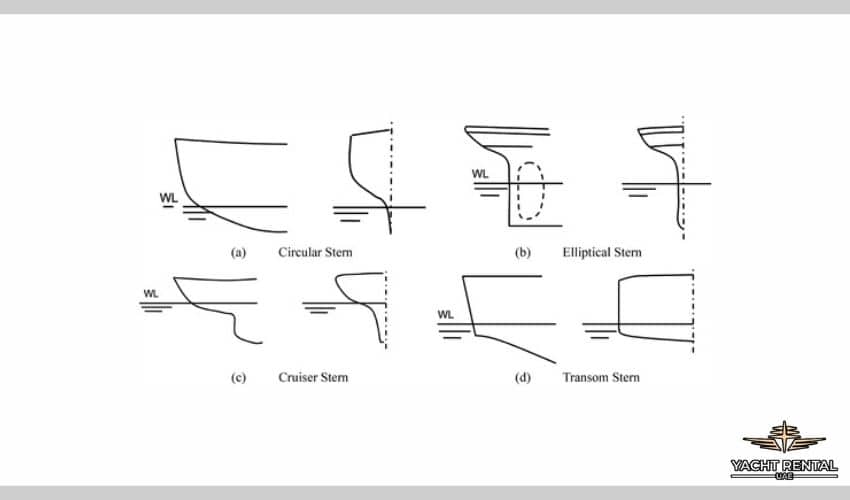
- Transom Stern
- Elliptical Stern
- Round Stern
- Canoe Stern
Transom Stern
The transom stern represents one of the most common stern designs in modern recreational boats.
This flat, vertical surface at the boat’s rear provides structural integrity and serves as an attachment point for outboard motors.
Many Dubai yacht rentals feature transom sterns with specially designed platforms for swimming and water activities.
Elliptical Stern
The elliptical or fantail stern features a curved, rounded shape that follows the natural lines of the boat’s hull.
The design offers improved hydrodynamic performance compared to the transom stern, reducing drag and enhancing fuel efficiency during cruising.
Round Stern
The round stern design creates a continuous curved surface that wraps around the back of the vessel.
The configuration of a round stern improves water flow around the hull, reducing turbulence and enhancing stability.
Moreover, round sterns gained popularity in naval vessels before becoming common in recreational boating.
Canoe Stern
The canoe stern features a pointed, tapered design reminiscent of traditional canoes.
It excels in following seas and rough water conditions, making it popular for offshore cruising yachts designed for extended voyages.
Functions and Importance of the Stern
- Structural Support and Stability
- Housing for Propulsion and Steering Systems
- Social and Recreational Space
Structural Support and Stability
The stern provides essential structural integrity to the vessel’s hull, distributing stress and maintaining the boat’s shape.
A well-designed stern contributes significantly to overall stability, particularly when navigating rough waters or making tight turns.
The hull sections located before the stern typically consist of U-shaped rib-like frames arranged in a sloped or “cant” configuration.
The last frame before the stern, called the fashion timber or fashion piece, plays a crucial role in “fashioning” the after part of the ship and supporting the various beams that make up the stern structure.
Housing for Propulsion and Steering Systems
One of the primary functions of a boat’s stern is to provide space for the tiller and steering mechanisms.
In many vessels, the rudder attaches directly to the stern, allowing precise directional control.
In addition, the stern often houses the outboard motor or inboard propeller system that powers the boat forward.
Also, this placement near the propeller minimizes the distance between propulsion components, reducing material requirements and improving efficiency.
The proximity of steering and propulsion systems at the stern creates an integrated control center for the vessel’s movement.
Social and Recreational Space
On modern luxury yachts available for rental in Dubai, the stern often transforms into a vibrant social hub.
These spaces frequently feature extended swim platforms, seating areas, and occasionally amenities like outdoor bars or dining spaces.
Many high-end yacht models incorporate stern flaps that not only improve performance but also expand the usable space at the back of the vessel.
Components and Features of the Stern
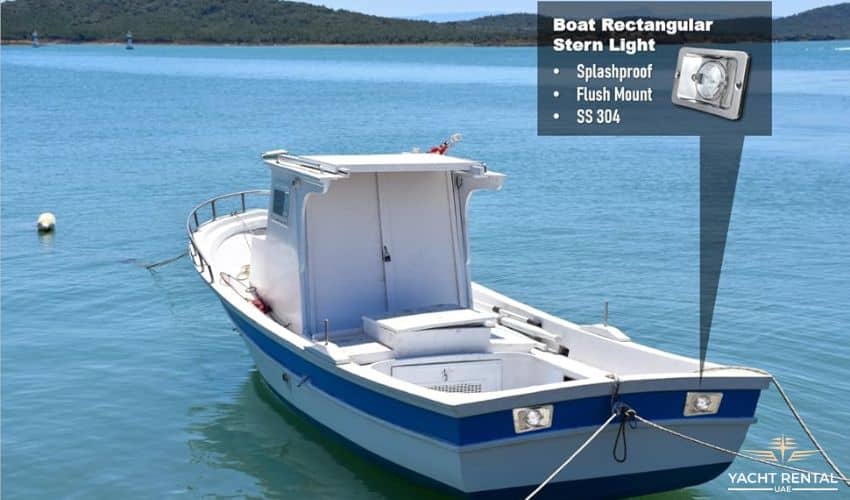
- Transom
- Stern Flaps
- Navigation Lights
Transom
The transom refers to the flat surface that forms the very back of many boats.
It serves multiple functions, including structural support and mounting points for various accessories. On outboard-powered boats, the transom provides the attachment point for the motor.
When examining luxury yacht options in Dubai, the transom design significantly impacts both aesthetics and functionality.
Stern Flaps
Stern flaps represent innovative modifications that enhance vessel performance and efficiency.
These horizontal extensions attached to the bottom of the transom alter water flow patterns and can reduce drag while improving stability.
Research demonstrates that properly designed stern flaps can decrease fuel consumption by approximately 8% across various operating speeds.
Studies indicate that stern flaps work by slowing water flow from the forward parts of the ship, increasing pressure under the vessel.
Likewise, this pressure generates forward thrust in high-speed displacement ships and alters trim in planning vessels, thereby reducing overall resistance.
Navigation Lights
Maritime regulations require all vessels to display specific navigation lights during nighttime operation or periods of reduced visibility.
The stern traditionally displays a white navigation light visible from behind, allowing other boaters to identify the vessel’s position and direction of travel.
Moreover, this light plays a crucial role in preventing collisions and maintaining safe waterway traffic patterns.
Performance Benefits of Stern Flaps
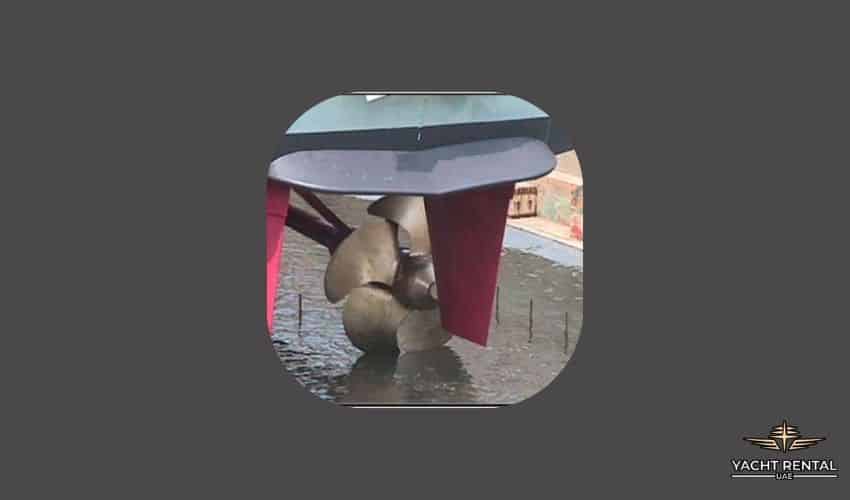
Recent research demonstrates significant performance advantages from properly designed stern flaps.
A 2025 study found that specific stern tunnel modifications in catamarans achieved resistance reductions of up to 39% compared to original models without modifications.
Another notable study from the Defense Science Journal indicated that stern flaps reduced effective power demand, average fuel consumption, and emissions by approximately 8% in high-speed displacement vessels.
When calculated over a vessel’s operational lifetime, these improvements translate into substantial cost savings and environmental benefits.
Optimal Stern Flap Design
The design and development of effective stern flaps requires careful engineering consideration.
Research indicates that flaps with a chord length of approximately 1.5% of the vessel’s overall length, spanning about 42% of the transom width, and angled at 5 degrees often deliver optimal performance.
The performance benefits vary across different speed ranges, with some configurations showing up to 16% fuel consumption reduction in low Froude number ranges (slower speeds) and 3-5% reduction in intermediate to high Froude number ranges (higher speeds).
Navigation and the Stern
- Directional References
- Wake Formation and Management
Directional References
When describing locations on a boat, maritime terminology uses specific directional references. The stern serves as a key reference point in this navigational language.
When standing aboard and facing forward (toward the bow), the left side is called port, and the right side is starboard.
Understanding these terms proves essential for clear communication during maneuvering, docking, and emergency situations.
Unlike relative terms like “left” and “right,” which change depending on which way someone faces, nautical terms remain consistent regardless of personal orientation.
Wake Formation and Management
The stern design significantly influences wake formation as the vessel moves through water.
Different stern configurations create distinct wake patterns that affect fuel efficiency, stability, and impact on surrounding environments.
Luxury yacht designs often incorporate hull and stern shapes that minimize wake disruption for smoother cruising experiences.
Professional captains understand how stern characteristics influence handling characteristics and adjust their navigation techniques accordingly.
Final Words About the Stern of a Boat
Understanding stern features, designs, and modifications helps yacht enthusiasts make informed decisions when renting or purchasing watercraft.
Whether you are selecting a boat or a yacht for a special occasion or seeking to understand maritime terminology, appreciating the stern’s significance provides valuable insight into nautical design and function.
FAQs About the Stern of a Boat
What is the difference between the stern and the aft of a boat?
While closely related, these terms have subtle differences. The stern refers specifically to the outside structural portion at the back of the vessel. Aft describes the general direction or region toward the back of the boat from an internal perspective. When someone instructs you to move “aft,” they’re directing you toward the stern from wherever you currently stand onboard.
Why are stern flaps installed on many boats?
Stern flaps improve hydrodynamic performance by altering water flow patterns around the vessel’s rear section. Research demonstrates that they can reduce fuel consumption by approximately 8% by recovering energy from the surrounding water flow. These modifications increase pressure under the vessel, generating forward thrust or optimizing trim depending on the hull design.
How does stern design affect boat handling?
The stern configuration significantly influences stability, turning characteristics, and wake formation. Vessels with wider, flatter sterns typically provide greater stability but may generate larger wakes. Pointed or tapered stern designs often track better in following seas but may offer less rear deck space. Professional captains adjust their handling techniques based on these specific stern characteristics.
What maintenance does a boat’s stern typically require?
Regular stern maintenance includes inspecting the transom for structural integrity, cleaning marine growth from underwater surfaces, checking navigation light functionality, and maintaining any stern-mounted equipment. For vessels with outboard motors, verify secure transom attachment points. Fiberglass transoms should be examined for signs of delamination or water intrusion that could compromise structural integrity.

